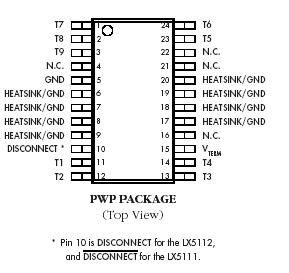LX5111DCP, LX5112, LX5112CD Selling Leads, Datasheet
MFG:MSC Package Cooled:SOP D/C:98+

LX5111DCP, LX5112, LX5112CD Datasheet download

Part Number: LX5111DCP
MFG: MSC
Package Cooled: SOP
D/C: 98+


MFG:MSC Package Cooled:SOP D/C:98+

LX5111DCP, LX5112, LX5112CD Datasheet download

MFG: MSC
Package Cooled: SOP
D/C: 98+
Want to post a buying lead? If you are not a member yet, please select the specific/related part number first and then fill the quantity and your contact details in the "Request for Quotation Form" on the left, and then click "Send RFQ".Your buying lead can then be posted, and the reliable suppliers will quote via our online message system or other channels soon.
TOP
PDF/DataSheet Download
Datasheet: LX509
File Size: 87282 KB
Manufacturer: ETC [ETC]
Download : Click here to Download
PDF/DataSheet Download
Datasheet: LX5112
File Size: 150241 KB
Manufacturer: MICROSEMI [Microsemi Corporation]
Download : Click here to Download
PDF/DataSheet Download
Datasheet: LX5112CDP
File Size: 150241 KB
Manufacturer: MICROSEMI [Microsemi Corporation]
Download : Click here to Download
The LX5111/5112 SCSI terminators are part of Linfinity's UltraMAX family of high-performance, adaptive, non-linear mode SCSI products, which are designed to deliver true UltraSCSI performance in SCSI applications. The low voltage BiCMOS architecture employed in their design offers superior performance to older linear passive and active techniques. Linfinity's UltraMAX architecture employs high-speed adaptive elements for each channel, thereby providing the fastest response possible - typically 35MHz, which is 100 times faster than the older linear regulator/terminator approach used by other manufacturers.
Products using this older linear regulator approach have bandwidths which are dominated by the output capacitor and which are limited to 500KHz (see further discussion in the Functional Description section). The UltraMAX architecture also eliminates the output compensation capacitor typical in earlier terminator designs. Each is approved for use with SCSI-1, -2, -3, UltraSCSI and beyond - providing the highest performance alternative available today.
Another key improvement offered by the LX5111/5112 lies in their ability to insure reliable, error-free communications even in systems which do not adhere to recommended SCSI hardware design guidelines, such as the use of improper cable lengths and impedances. Frequently, this situation is not controlled by the peripheral or host designer and, when problems occur, they are the first to be made aware of the problem. The LX5111/5112 architecture is much more tolerant of marginal system integrations.
Recognizing the needs of portable and configurable peripherals, the LX5111/5112 have a TTL compatible sleep/disable mode. Quiescent current is typically less than 275µA in this mode, while the output capacitance is also less than 3pF. The obvious advantage of extended battery life for portable systems is inherent in the product's sleep-mode feature. Additionally, the disable function permits factory-floor or production-line configurability, reducing inventory and productline diversity costs. Field configurability can also be accomplished without physically removing components which, often times results in field returns due to mishandling. Reduced component counts is also inherent in the LX5111/5112's architecture.
Traditional termination techniques require large stabilization and transient protection capacitors of up to 20µF in value and size. The LX5111/5112 architecture does not require these components, allowing all the cost savings associated with inventory, board space, assembly, reliability, and component costs.
TermPwr Voltage .................................................................................................+7V
Signal Line Voltage ................................................................................... 0V to +7V
Regulator Output Current ................................................................................... 0.4A
Operating Junction Temperature
Plastic (DP, PWP Packages) ........................................................................ 150°C
Storage Temperature Range .............................................................. -65°C to 150°C
Lead Temperature (Soldering, 10 seconds) .................................................... 300°C

